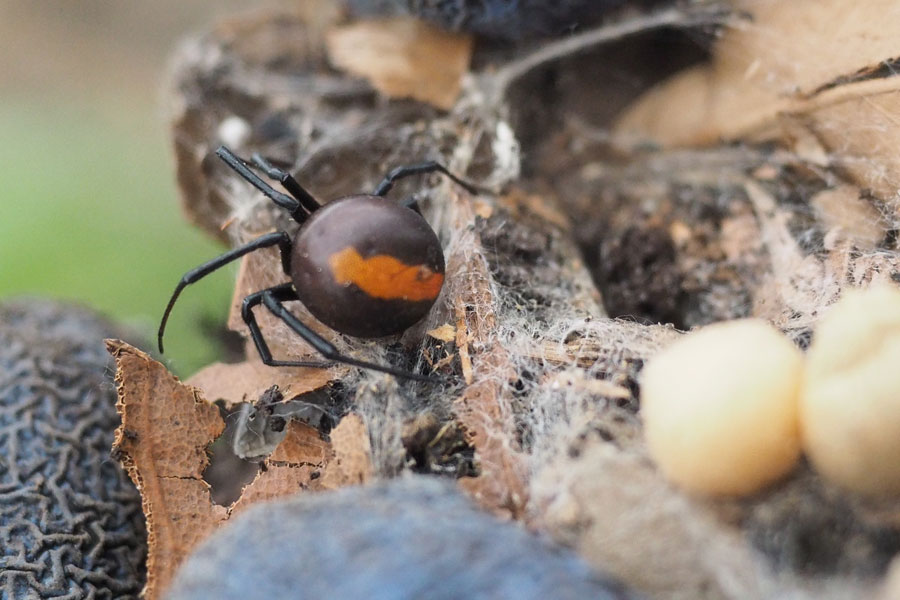
Take care when reaching for items in the garden that haven’t been disturbed for a while, look out for animals that may hide there. Shake out gloves before using them but always wear gloves when gardening.
Warm dry places are very attractive to red back spiders. Their favourite prey, insects and slaters, is available in abundance in our garden. Redback spiders are nocturnal, they move slowly. Once they found a spot to life they are fairly sedentary.
The female redback has a spherical black abdomen, a red strip on the back and another red sign on the underside, shaped like an hourglass. The spider is about 1 cm long and has thin legs. The male spiders and spiderlings are much smaller and don’t show the eponymous signs. The spider-net appears unstructured and is fairly strong. Sometimes there are egg-sacks attached that are about 1 cm in diameter.
Redback spiders are not aggressive but will bite when they feel threatened. Bites can be seriously venomous to humans. There is often no obvious bite mark or redness. Local pain increasing over time, local sweating and goosebumps are important telltale signs of a bite. Further symptoms include generalised muscle rigidity and intense pain, stomach cramps, vomiting and more severe reactions that can become life threatening. If untreated symptoms can persist for months. There hasn’t been a fatality with redbacks since an anti-venom was introduced and even though the majority of bites will probably not turn out this serious we strongly recommend to seek professional medical advice and treatment in case of a bite.
Having said this, redback spiders are beautiful animals and beneficial to our garden because they help us to keep the headcount of pests in check. If we don’t threaten them, they will definitely not hurt us.
One thought on “Red back spider”
Comments are closed.